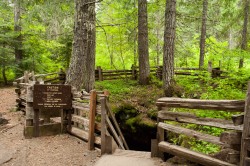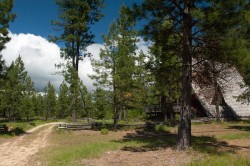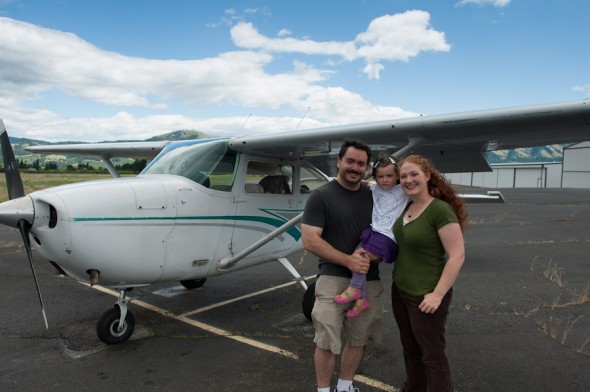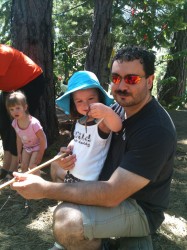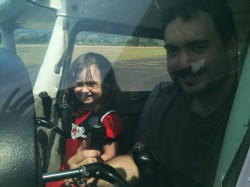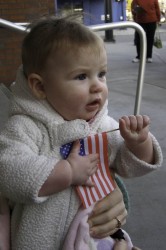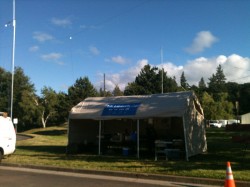 I passed my technician exam and became a HAM nine years ago while attending Cal Poly. A number of us were involved with the Cal Poly Picosatellite Project, which involved designing an orbital satellite capable of down-linking remote sensor data via HAM radio bands. Many of the engineers on the project became HAMs in order to communicate with this and other orbital satellites carrying amateur radio (OSCARs). Unfortunately, I ended up graduating before I could use the privileges my new license provided, and I haven’t been involved in amateur radio since then. That is, until a few months ago, when the local LDS church put on an emergency preparedness fair. Several classes were offered at the fair, including one that covered the importance of amateur radio in emergencies. This was all that was necessary to rekindle my interest in this hobby and begin preparing to upgrade my license to a general class. With my new found motivation I realized that I had still never been on the air, a fact I was somewhat embarrassed to admit to other HAMs. I decided to attend our local field day where I learned that my situation wasn’t uncommon. I also had the opportunity, after nine years, to get on the air and make distant contacts.
I passed my technician exam and became a HAM nine years ago while attending Cal Poly. A number of us were involved with the Cal Poly Picosatellite Project, which involved designing an orbital satellite capable of down-linking remote sensor data via HAM radio bands. Many of the engineers on the project became HAMs in order to communicate with this and other orbital satellites carrying amateur radio (OSCARs). Unfortunately, I ended up graduating before I could use the privileges my new license provided, and I haven’t been involved in amateur radio since then. That is, until a few months ago, when the local LDS church put on an emergency preparedness fair. Several classes were offered at the fair, including one that covered the importance of amateur radio in emergencies. This was all that was necessary to rekindle my interest in this hobby and begin preparing to upgrade my license to a general class. With my new found motivation I realized that I had still never been on the air, a fact I was somewhat embarrassed to admit to other HAMs. I decided to attend our local field day where I learned that my situation wasn’t uncommon. I also had the opportunity, after nine years, to get on the air and make distant contacts.
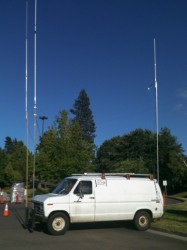 Field day is an exercise organized by the Amateur Radio Relay League (ARRL), held annually on the fourth weekend in June. It is considered the largest emergency preparedness exercise in North America, with over thirty thousand operators participating across all of the amateur radio bands. Field day starts on Friday when HAMs gather at a predetermined outdoor location to set up an emergency communications center (typically a tent), radio gear, antennas, power supplies and amenities (such as heaters, food, coolers, etc.). The exercise begins at 1800 UTC on Saturday and ends at 2059 UTC on Sunday, after which the HAMs pack up their gear and head home. During the exercise the objective is to make as many contacts as possible under field conditions. In addition to being an emergency communications exercise, it is also a contest, with points being awarded for each contact made. More points are awarded for distant contacts or for using lower power levels to transmit. Contacts can be made with voice communication or by utilizing digital radio modes and Morse code (CW). According to the ARRL web page, the objective of field day is: [Read more…]
Field day is an exercise organized by the Amateur Radio Relay League (ARRL), held annually on the fourth weekend in June. It is considered the largest emergency preparedness exercise in North America, with over thirty thousand operators participating across all of the amateur radio bands. Field day starts on Friday when HAMs gather at a predetermined outdoor location to set up an emergency communications center (typically a tent), radio gear, antennas, power supplies and amenities (such as heaters, food, coolers, etc.). The exercise begins at 1800 UTC on Saturday and ends at 2059 UTC on Sunday, after which the HAMs pack up their gear and head home. During the exercise the objective is to make as many contacts as possible under field conditions. In addition to being an emergency communications exercise, it is also a contest, with points being awarded for each contact made. More points are awarded for distant contacts or for using lower power levels to transmit. Contacts can be made with voice communication or by utilizing digital radio modes and Morse code (CW). According to the ARRL web page, the objective of field day is: [Read more…]
